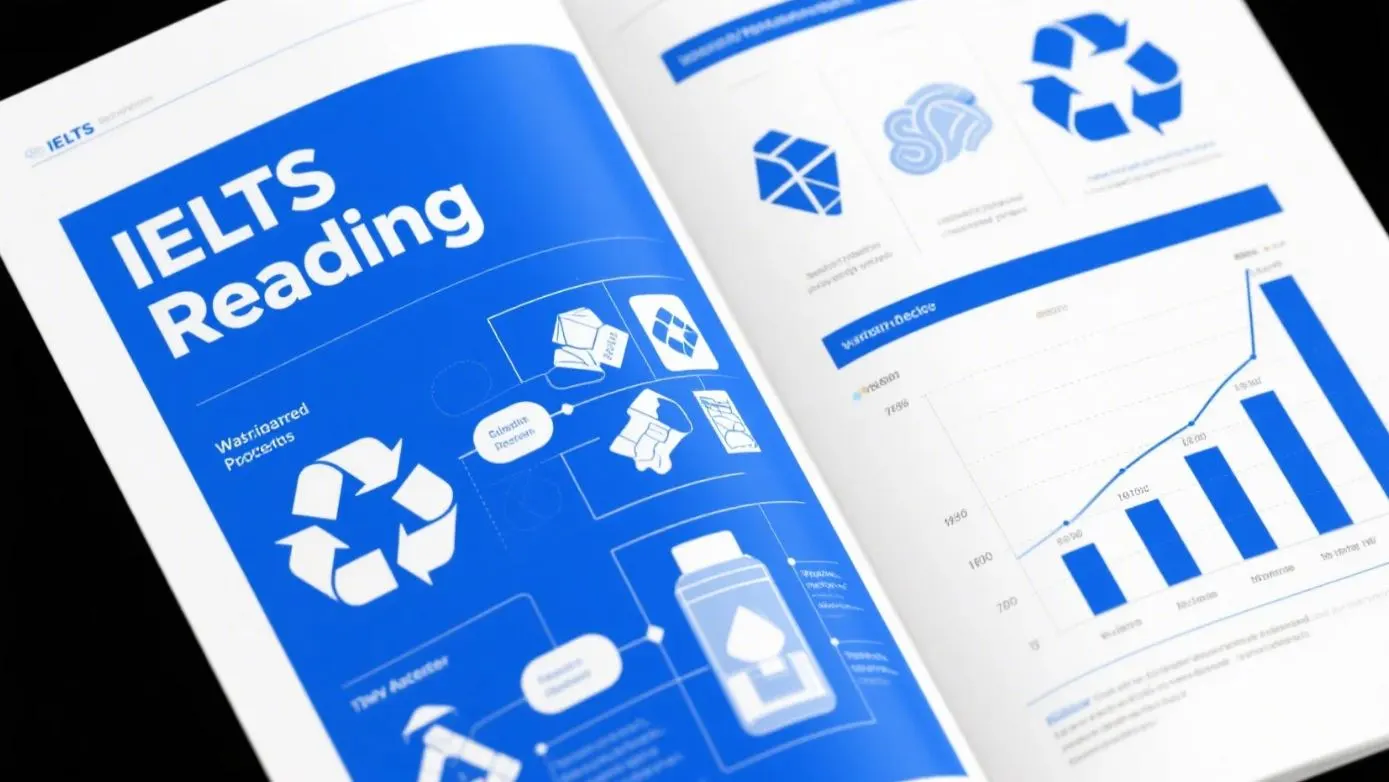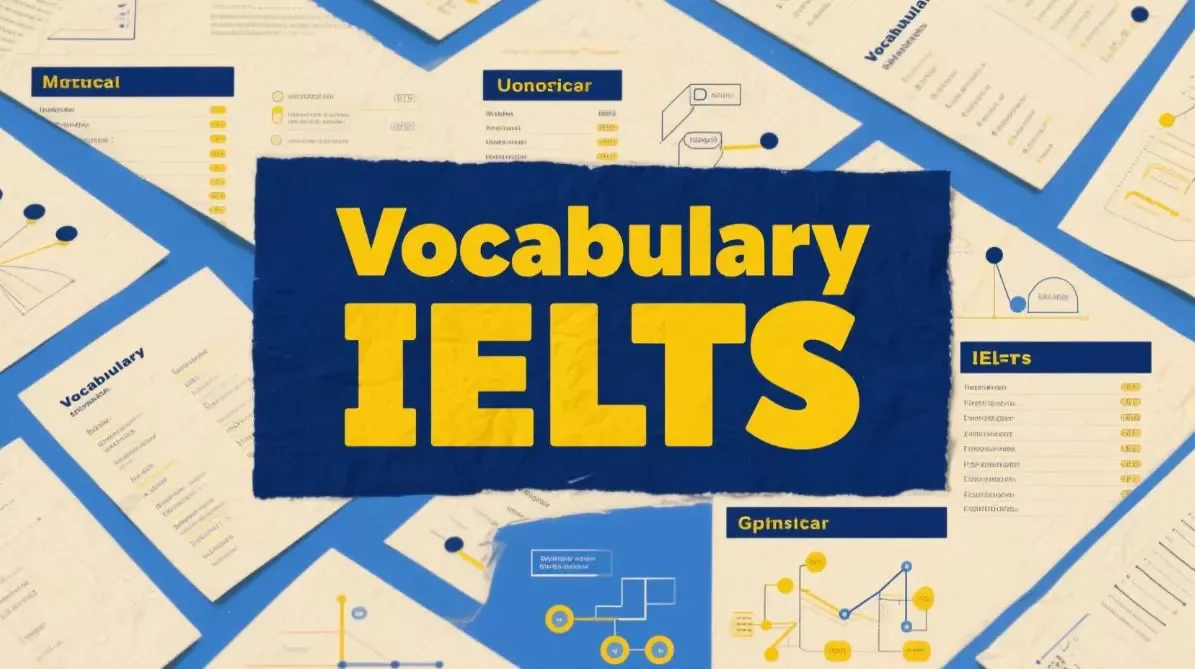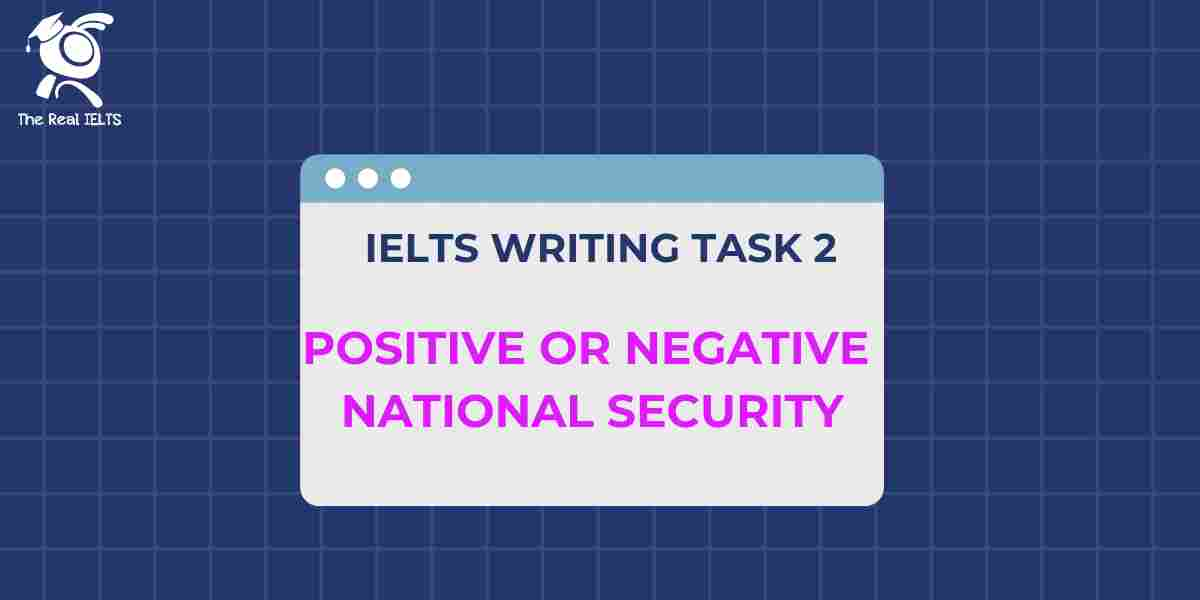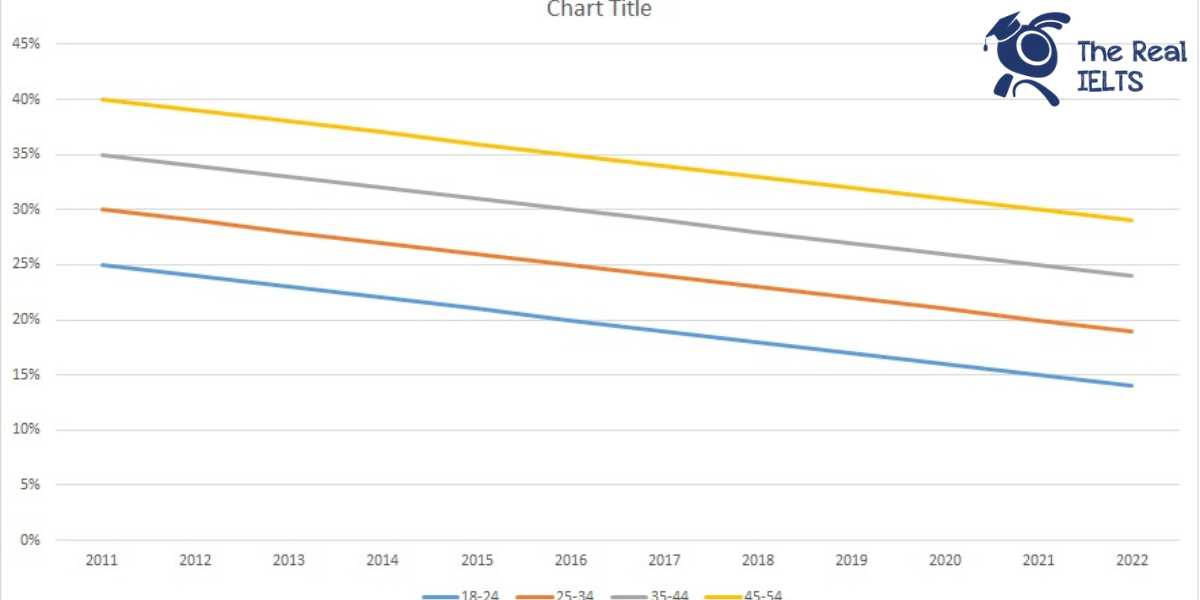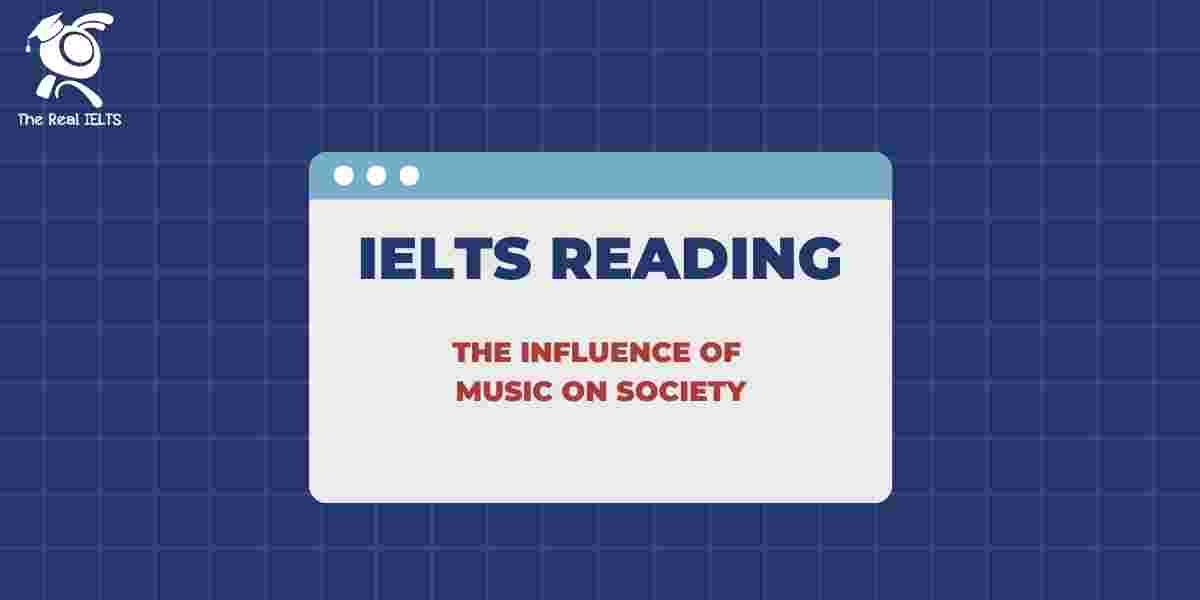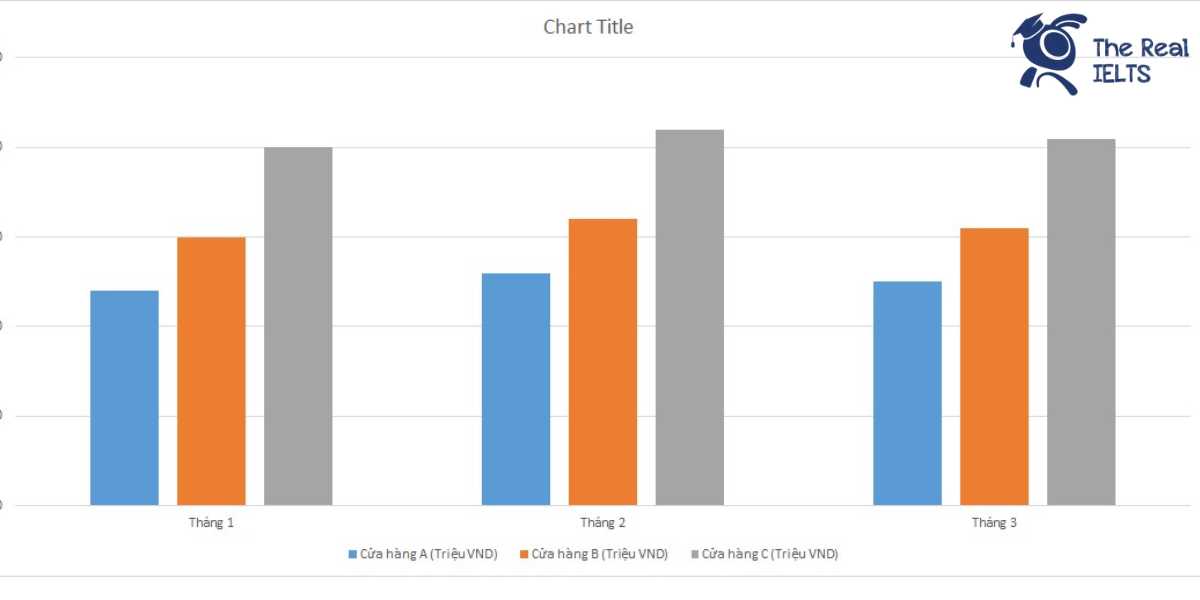Trong kỳ thi IELTS, kỹ năng đọc hiểu là thử thách lớn, yêu cầu thí sinh phân tích nhanh và chính xác các văn bản học thuật phức tạp. IELTS Reading không chỉ kiểm tra từ vựng mà còn đòi hỏi khả năng suy luận và quản lý thời gian hiệu quả. Với các bài đọc đa dạng về chủ đề và độ khó tăng dần, người học cần xây dựng chiến lược đọc chuyên sâu để tối ưu hóa hiệu suất và đạt band điểm cao.
Đọc thêm: IELTS Reading Practice Test: Tropical Rainforests and Deforestation
Recycling and Waste Management: A Global Challenge
Recycling and waste management are critical for sustainable development in a world producing millions of tons of waste annually. Recycling involves processing used materials, such as plastic, paper, and glass, into new products, reducing the need for raw materials. This process conserves natural resources and saves energy, as manufacturing from recycled materials often requires less power than producing from virgin materials. For example, recycling aluminum cans uses 95% less energy than creating new ones from bauxite ore.
However, global recycling rates remain low. In many countries, only 20% of waste is recycled, with the rest sent to landfills or incinerated, releasing harmful pollutants. Challenges include inadequate infrastructure, lack of public awareness, and contamination of recyclables, which reduces their usability. Developing nations often face greater difficulties due to limited funding and technology.
Governments and organizations are taking action. Some countries, like Germany and South Korea, have achieved recycling rates above 50% through strict regulations and public education campaigns. Innovations, such as chemical recycling for plastics, are emerging to tackle hard-to-recycle materials. Community initiatives, like zero-waste programs, encourage reduced consumption and proper sorting of waste. Despite progress, critics argue that recycling alone cannot solve the waste crisis, as overconsumption drives waste production. A combination of reducing, reusing, and recycling, alongside policy changes, is essential for effective waste management and a healthier planet.
Câu hỏi
Questions 1–40
Question 1 (Multiple Choice)
What is a key benefit of recycling mentioned in the passage?
A. It eliminates all waste.
B. It conserves natural resources.
C. It increases energy consumption.
D. It requires more raw materials.
Question 2 (Multiple Choice)
Why does recycling aluminum cans save energy?
A. It uses more power than producing new cans.
B. It requires 95% less energy than using bauxite ore.
C. It involves no energy at all.
D. It only works in developed countries.
Question 3 (True/False/Not Given)
Recycling rates are higher in developing countries than in developed ones.
A. True
B. False
C. Not Given
Question 4 (True/False/Not Given)
Chemical recycling is mentioned as a solution for hard-to-recycle plastics.
A. True
B. False
C. Not Given
Question 5 (Yes/No/Not Given)
Does the passage suggest that recycling alone can solve the global waste crisis?
A. Yes
B. No
C. Not Given
Question 6 (Yes/No/Not Given)
Are zero-waste programs mentioned as a way to encourage proper waste sorting?
A. Yes
B. No
C. Not Given
Question 7 (Matching Information)
Which paragraph discusses the energy savings of recycling aluminum cans?
A. Paragraph 1
B. Paragraph 2
C. Paragraph 3
D. Paragraph 4
Question 8 (Matching Information)
In which paragraph are the challenges of recycling in developing nations mentioned?
A. Paragraph 1
B. Paragraph 2
C. Paragraph 3
D. Paragraph 4
Question 9 (Matching Headings)
Choose the correct heading for Paragraph 1:
A. Challenges of Recycling
B. Benefits and Process of Recycling
C. Government Regulations
D. Innovations in Waste Management
Question 10 (Matching Headings)
Choose the correct heading for Paragraph 3:
A. Global Recycling Rates
B. Solutions and Innovations in Recycling
C. Problems with Landfills
D. Public Awareness Campaigns
Question 11 (Matching Sentence Endings)
Recycling helps the environment by …
A. increasing the need for raw materials.
B. conserving natural resources.
C. producing more pollutants.
D. requiring more energy.
Question 12 (Matching Sentence Endings)
Developing countries face recycling challenges due to …
A. strict government regulations.
B. limited funding and technology.
C. high recycling rates.
D. excessive public awareness.
Question 13 (Sentence Completion)
Recycling reduces the need for _______ materials.
Question 14 (Sentence Completion)
In many countries, only 20% of waste is _______ , with the rest sent to landfills.
Question 15 (Summary Completion)
Complete the summary using words from the passage:
Recycling saves _______ by using less power than manufacturing from virgin materials.
Question 16 (Summary Completion)
Countries like Germany have high recycling rates due to strict _______ and public education.
Question 17 (Diagram Label Completion)
Label the diagram of a recycling process:
The material recycled to save 95% energy compared to using bauxite ore is _______.
Question 18 (Diagram Label Completion)
Label the diagram of a waste management system:
The process of turning used materials into new products is called _______.
Question 19 (Short Answer Questions)
What is one challenge mentioned for global recycling efforts?
Question 20 (Short Answer Questions)
What percentage of waste is recycled in many countries, according to the passage?
Question 21 (Table Completion)
Complete the table below with information from the passage:
| Issue | Cause | Solution |
|---|---|---|
| Low recycling rates | _____________ | Strict regulations |
| Contamination | Improper sorting | _____________ |
Question 22 (Multiple Choice)
What is a limitation of recycling mentioned in the passage?
A. It solves the waste crisis completely.
B. It cannot address overconsumption.
C. It requires no public awareness.
D. It eliminates all pollutants.
Question 23 (True/False/Not Given)
All countries have achieved recycling rates above 50%.
A. True
B. False
C. Not Given
Question 24 (Yes/No/Not Given)
Does the passage indicate that reducing consumption is necessary for effective waste management?
A. Yes
B. No
C. Not Given
Question 25 (Matching Information)
Which paragraph mentions the role of community initiatives in waste management?
A. Paragraph 1
B. Paragraph 2
C. Paragraph 3
D. Paragraph 4
Question 26 (Matching Headings)
Choose the correct heading for Paragraph 2:
A. Benefits of Recycling
B. Global Challenges in Recycling
C. Innovations in Plastic Recycling
D. Community Waste Programs
Question 27 (Sentence Completion)
Countries like _______ have achieved recycling rates above 50%.
Question 28 (Summary Completion)
Innovations like _______ recycling are helping to process difficult materials.
Question 29 (Short Answer Questions)
What is one example of a community initiative mentioned in the passage?
Question 30 (Diagram Label Completion)
Label the diagram of a waste management strategy:
The program encouraging reduced consumption and proper sorting is called _______.
Question 31 (Multiple Choice)
What is one reason recycling rates are low in many countries?
A. Excessive public awareness
B. Lack of infrastructure
C. High recycling efficiency
D. No government regulations
Question 32 (True/False/Not Given)
Recycling paper uses more energy than producing new paper.
A. True
B. False
C. Not Given
Question 33 (Yes/No/Not Given)
Does the passage suggest that incineration of waste produces harmful pollutants?
A. Yes
B. No
C. Not Given
Question 34 (Matching Sentence Endings)
Critics argue that recycling alone is insufficient because …
A. it reduces waste production.
B. overconsumption drives waste creation.
C. it eliminates the need for landfills.
D. it requires no technology.
Question 35 (Sentence Completion)
Zero-waste programs encourage proper _______ of waste.
Question 36 (Summary Completion)
Complete the summary:
Effective waste management requires a combination of reducing, reusing, and _______.
Question 37 (Short Answer Questions)
Name one country mentioned in the passage with high recycling rates.
Question 38 (Table Completion)
Complete the table below with information from the passage:
| Material | Benefit of Recycling | Challenge |
|---|---|---|
| Aluminum | _____________ | Contamination |
| Plastic | _____________ | Hard to recycle |
Question 39 (Multiple Choice)
What is a key feature of Germany’s recycling success?
A. Lack of public education
B. Strict regulations and campaigns
C. Minimal use of technology
D. Increased waste production
Question 40 (True/False/Not Given)
Recycling glass requires more energy than producing new glass.
A. True
B. False
C. Not Given
Đáp án và Giải thích
Question 1
Correct Option: B
Explanation: Bài đọc nêu rằng tái chế “conserves natural resources” bằng cách giảm nhu cầu về nguyên liệu thô. Lựa chọn B đúng vì nó khớp với thông tin này. Các lựa chọn khác không được đề cập hoặc không chính xác.
Question 2
Correct Option: B
Explanation: Bài đọc giải thích rằng tái chế lon nhôm sử dụng “95% less energy” so với sản xuất từ quặng bauxite. Lựa chọn B đúng vì nó phản ánh thông tin này.
Question 3
Correct Option: B
Explanation: Bài đọc nêu rằng các nước đang phát triển gặp khó khăn trong tái chế do thiếu kinh phí và công nghệ, ngụ ý rằng tỷ lệ tái chế thấp hơn so với các nước phát triển. Do đó, câu này sai.
Question 4
Correct Option: A
Explanation: Bài đọc đề cập đến “chemical recycling for plastics” như một đổi mới để xử lý các vật liệu khó tái chế. Câu này đúng vì thông tin khớp với bài.
Question 5
Correct Option: B
Explanation: Bài đọc nêu rằng “critics argue that recycling alone cannot solve the waste crisis,” cho thấy tái chế không phải là giải pháp toàn diện. Do đó, đáp án là “No.”
Question 6
Correct Option: A
Explanation: Bài đọc đề cập đến “zero-waste programs” khuyến khích giảm tiêu thụ và phân loại rác đúng cách. Câu trả lời là “Yes” vì thông tin này được nêu rõ.
Question 7
Correct Option: A
Explanation: Tiết kiệm năng lượng khi tái chế lon nhôm được đề cập ở đoạn 1: “recycling aluminum cans uses 95% less energy.” Đáp án đúng là A.
Question 8
Correct Option: B
Explanation: Các thách thức tái chế ở các nước đang phát triển được thảo luận ở đoạn 2: “Developing nations often face greater difficulties due to limited funding and technology.” Đáp án đúng là B.
Question 9
Correct Option: B
Explanation: Đoạn 1 giới thiệu tái chế và lợi ích của nó, như tiết kiệm tài nguyên và năng lượng. Tiêu đề “Benefits and Process of Recycling” phù hợp nhất.
Question 10
Correct Option: B
Explanation: Đoạn 3 thảo luận về các giải pháp như quy định, chiến dịch giáo dục, và đổi mới như tái chế hóa học. Tiêu đề “Solutions and Innovations in Recycling” là phù hợp.
Question 11
Correct Option: B
Explanation: Bài đọc nêu rằng tái chế “conserves natural resources,” khớp với lựa chọn B. Các lựa chọn khác không đúng hoặc mâu thuẫn với bài.
Question 12
Correct Option: B
Explanation: Bài đọc đề cập rằng các nước đang phát triển gặp khó khăn do “limited funding and technology.” Lựa chọn B đúng vì nó phản ánh nguyên nhân này.
Question 13
Correct Answer: raw
Explanation: Bài đọc nêu rằng tái chế giảm nhu cầu về “raw materials.” Từ “raw” phù hợp để điền vào chỗ trống.
Question 14
Correct Answer: recycled
Explanation: Bài đọc đề cập rằng “only 20% of waste is recycled” ở nhiều quốc gia. Từ “recycled” phù hợp.
Question 15
Correct Answer: energy
Explanation: Bài đọc nêu rằng tái chế tiết kiệm “energy” so với sản xuất từ vật liệu nguyên sinh. Từ “energy” phù hợp.
Question 16
Correct Answer: regulations
Explanation: Bài đọc nêu rằng các quốc gia như Đức đạt tỷ lệ tái chế cao nhờ “strict regulations and public education.” Từ “regulations” phù hợp.
Question 17
Correct Answer: aluminum
Explanation: Bài đọc đề cập rằng tái chế “aluminum” tiết kiệm 95% năng lượng so với quặng bauxite. Từ “aluminum” là đúng.
Question 18
Correct Answer: recycling
Explanation: Bài đọc định nghĩa tái chế là quá trình “turning used materials into new products.” Từ “recycling” phù hợp.
Question 19
Correct Answer: Inadequate infrastructure
Explanation: Bài đọc liệt kê “inadequate infrastructure” như một thách thức trong nỗ lực tái chế toàn cầu.
Question 20
Correct Answer: 20%
Explanation: Bài đọc nêu rằng “only 20% of waste is recycled” ở nhiều quốc gia. Đáp án này chính xác.
Question 21
Correct Answers:
- Low recycling rates Cause: Inadequate infrastructure
- Contamination Solution: Public education campaigns
Explanation: - Bài đọc nêu rằng tỷ lệ tái chế thấp do “inadequate infrastructure.”
- Contamination do phân loại không đúng có thể được giải quyết bằng “public education campaigns,” như được đề cập ở đoạn 3.
Question 22
Correct Option: B
Explanation: Bài đọc nêu rằng “recycling alone cannot solve the waste crisis, as overconsumption drives waste production.” Lựa chọn B đúng vì nó đề cập đến hạn chế này.
Question 23
Correct Option: B
Explanation: Bài đọc chỉ đề cập rằng một số quốc gia như Đức và Hàn Quốc đạt tỷ lệ tái chế trên 50%, không phải tất cả. Câu này sai.
Question 24
Correct Option: A
Explanation: Bài đọc nêu rằng “reducing, reusing, and recycling” là cần thiết cho quản lý rác hiệu quả. Câu trả lời là “Yes.”
Question 25
Correct Option: C
Explanation: Các sáng kiến cộng đồng, như chương trình không rác thải, được đề cập ở đoạn 3: “Community initiatives, like zero-waste programs…” Đáp án đúng là C.
Question 26
Correct Option: B
Explanation: Đoạn 2 thảo luận về tỷ lệ tái chế thấp, bãi rác, và các thách thức như thiếu cơ sở hạ tầng. Tiêu đề “Global Challenges in Recycling” phù hợp nhất.
Question 27
Correct Answer: Germany
Explanation: Bài đọc nêu rằng “Germany and South Korea” đạt tỷ lệ tái chế trên 50%. “Germany” là một đáp án đúng.
Question 28
Correct Answer: chemical
Explanation: Bài đọc đề cập đến “chemical recycling” như một đổi mới để xử lý vật liệu khó tái chế. Từ “chemical” phù hợp.
Question 29
Correct Answer: Zero-waste programs
Explanation: Bài đọc đề cập đến “zero-waste programs” như một ví dụ về sáng kiến cộng đồng.
Question 30
Correct Answer: zero-waste
Explanation: Bài đọc đề cập đến “zero-waste programs” khuyến khích giảm tiêu thụ và phân loại rác. Từ “zero-waste” là đúng.
Question 31
Correct Option: B
Explanation: Bài đọc nêu rằng tỷ lệ tái chế thấp do “inadequate infrastructure.” Lựa chọn B đúng.
Question 32
Correct Option: C
Explanation: Bài đọc không đề cập đến năng lượng cần thiết để tái chế giấy so với sản xuất giấy mới. Thông tin này là “Not Given.”
Question 33
Correct Option: A
Explanation: Bài đọc nêu rằng đốt rác thải “releasing harmful pollutants.” Câu trả lời là “Yes.”
Question 34
Correct Option: B
Explanation: Bài đọc nêu rằng các nhà phê bình cho rằng tái chế không đủ vì “overconsumption drives waste production.” Lựa chọn B đúng.
Question 35
Correct Answer: sorting
Explanation: Bài đọc đề cập rằng chương trình không rác thải khuyến khích “proper sorting of waste.” Từ “sorting” phù hợp.
Question 36
Correct Answer: recycling
Explanation: Bài đọc nêu rằng quản lý rác hiệu quả cần kết hợp “reducing, reusing, and recycling.” Từ “recycling” phù hợp.
Question 37
Correct Answer: South Korea
Explanation: Bài đọc đề cập đến “Germany and South Korea” có tỷ lệ tái chế cao. “South Korea” là một đáp án đúng.
Question 38
Correct Answers:
- Aluminum Benefit: Saves energy
- Plastic Benefit: Conserves resources
Explanation: - Bài đọc nêu rằng tái chế nhôm “uses 95% less energy,” nên lợi ích là “Saves energy.”
- Tái chế nhựa giúp “conserves natural resources,” như được đề cập ở đoạn 1.
Question 39
Correct Option: B
Explanation: Bài đọc nêu rằng Đức thành công nhờ “strict regulations and public education campaigns.” Lựa chọn B đúng.
Question 40
Correct Option: C
Explanation: Bài đọc không đề cập đến năng lượng cần thiết để tái chế kính so với sản xuất kính mới. Thông tin này là “Not Given.”


